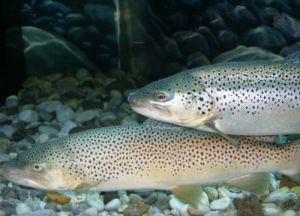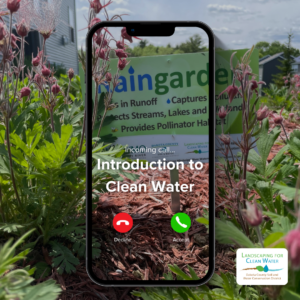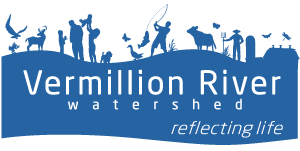- Categories
-
Tags
"State of the River" Report 2018 budget 25 by 25 Ag Water Quality Certification agriculture ais Alimagnet Angry Inch Angry Inch Brewery Apple Valley Apple Valley Senior Center aquatic invasive species astronomy bird watching board meeting buckthorn removal Burnsville Carpenter Nature Center Carpenter St. Croix Valley Nature Center citizen advisory group Clean Water Summit 2016 climate Coca-Cola Refreshments in Eagan Minn. Community Advisory Committee community event Conservation Minnesota County Fair CP Adams Park Dakota County Dakota County Parks Dakota County SWCD de-icing workshop Eagan Earth Day exhibits Farmington field day fishing Fix-It Clinic FMR Fortin Consulting Freshwater Society Friends of CNC Friends of the Mississippi River Governor Dayton Greenway groundwater Hastings Hastings Environmental Protectors Hastings Sand Coulee SNA information meeting invasive species removal Inver Grove Heights irrigation Joint Powers Board Kevin Smith Lake Marion Lakeville landscape for the river landscaping for clean water lawn and garden lawns maintenance MAISRC Master Water Stewards Mike Lynch Minnesota Department of Natural Resources Minnesota Institute of Astrophysics Minnesota Landscape Arboretum minnesota pollution control agency Minnesota StarWatch Mississippi River MPCA MWS native plants nitrates North Creek Parks Pine Bend SNA planting for clean planting for clean water pollinators prairie seed collection private wells public hearing public meeting rain barrel rainbarrel raingarden redevelopment rosemount salt sand coulee SNA Schaar's Bluff Gathering Center scientific and natural area Scott County scott swcd shoreline Smart Salting snow and ice best practices South Branch Vermillion River Spring Lake Park St. Croix Valley Bird Club star map starry stonewort starry trek stormwater retrofits SWCD TAG Technical Advisory Group Technical Advisory Group (TAG) tour town hall township officers Trevor Russell trout stream Trout Unlimited TU turfgrass maintenance Twin Cities Trout Unlimited UMN Extension University of Minnesota urban urban best management practices Vermillion Falls Park Vermillion River Vermillion River Aquatic Management Area Vermillion River Watershed Vermillion River Watershed Joint Powers Organization Vermillion Riverkeepers Vermillion Stewards volunteer VRWJPB VRWJPO VRWPC water conservation water quality Water treatment watershed management Watershed Plan watershed planning commission Watershed Planning Commission (WPC) We Are Water MN Whitetail Woods Regional Park winter road maintenance WPC
Irrigation Water Testing – Vermillion (city)
Dakota County, the Dakota County Soil and Water Conservation District, and the Minnesota Agricultural Water Resource Center will be offering farmers who irrigate their crops the opportunity to test their irrigation water for nitrogen. Testing is at no cost.
Participants will receive their results the same day. They will learn how to credit nitrate in their irrigation water for next year’s nutrient management plans. Participants will also walk through the Irrigation Management Assistant (IMA) Tool with a SWCD staff member. The tool helps with irrigation scheduling.
Private well owners can also have their drinking water tested for nitrate. They will receive their results and treatment recommendations, if applicable.
Sampling instructions for irrigators
Samples may be taken the day of analysis or ahead of time. Samples taken ahead of time must be frozen until attending a session to prevent samples from degrading.
Participants may bring in several frozen samples collected over a period of several days to get a more representative result.
Samples can be collected directly from irrigators or by installing a boiler drain to a pivot point or the well itself.
If sampling directly from irrigators:
- Allow irrigators to pump water for at least 15 minutes before sampling.
- Fill a clean 5-gallon bucket, or similar container. Mix before collecting the sample.
- Collect the test sample in a small Ziploc bag or a clean bottle or container. Only about 1 ounce of water is needed for testing.
Sampling instructions for private well owners
- Collect samples from your primary drinking water source after eight hours of nonuse, preferably first thing in the morning
- Collect your sample in a small Ziplock bag or clean bottle or container
- Do not run the water before sampling — collect the first draw in the container
- Only about 1 ounce of water is needed for testing, but collecting extra is advised.
Test results
Nitrogen results are confidential. Participants are not required to take any action after testing. They will receive their results and information on nitrogen crediting.
Irrigation Water Testing – Farmington
Dakota County, the Dakota County Soil and Water Conservation District and the Minnesota Agricultural Water Resource Center will be offering farmers who irrigate their crops the opportunity to test their irrigation water for nitrogen. Testing is at no cost.
Participants will receive their results the same day. They will learn how to credit nitrate in their irrigation water for next year’s nutrient management plans. Participants will also walk through the Irrigation Management Assistant (IMA) Tool with a SWCD staff member. The tool helps with irrigation scheduling.
Private well owners can also have their drinking water tested for nitrate. They will receive their results and treatment recommendations, if applicable.
Sampling instructions for irrigators
Samples may be taken the day of analysis or ahead of time. Samples taken ahead of time must be frozen until attending a session to prevent samples from degrading.
Participants may bring in several frozen samples collected over a period of several days to get a more representative result.
Samples can be collected directly from irrigators or by installing a boiler drain to a pivot point or the well itself.
If sampling directly from irrigators:
- Allow irrigators to pump water for at least 15 minutes before sampling.
- Fill a clean 5-gallon bucket, or similar container. Mix before collecting the sample.
- Collect the test sample in a small Ziploc bag or a clean bottle or container. Only about 1 ounce of water is needed for testing.
Sampling instructions for private well owners
- Collect samples from your primary drinking water source after eight hours of nonuse, preferably first thing in the morning
- Collect your sample in a small Ziplock bag or clean bottle or container
- Do not run the water before sampling — collect the first draw in the container
- Only about 1 ounce of water is needed for testing, but collecting extra is advised.
Test results
Nitrogen results are confidential. Participants are not required to take any action after testing. They will receive their results and information on nitrogen crediting.
Irrigation Water Testing – Marshan Township
Dakota County, the Dakota County Soil and Water Conservation District and the Minnesota Agricultural Water Resource Center will be offering farmers who irrigate their crops the opportunity to test their irrigation water for nitrogen. Testing is at no cost.
Participants will receive their results the same day. They will learn how to credit nitrate in their irrigation water for next year’s nutrient management plans. Participants will also walk through the Irrigation Management Assistant (IMA) Tool with a SWCD staff member. The tool helps with irrigation scheduling.
Private well owners can also have their drinking water tested for nitrate. They will receive their results and treatment recommendations, if applicable.
Sampling instructions for irrigators
Samples may be taken the day of analysis or ahead of time. Samples taken ahead of time must be frozen until attending a session to prevent samples from degrading.
Participants may bring in several frozen samples collected over a period of several days to get a more representative result.
Samples can be collected directly from irrigators or by installing a boiler drain to a pivot point or the well itself.
If sampling directly from irrigators:
- Allow irrigators to pump water for at least 15 minutes before sampling.
- Fill a clean 5-gallon bucket, or similar container. Mix before collecting the sample.
- Collect the test sample in a small Ziploc bag or a clean bottle or container. Only about 1 ounce of water is needed for testing.
Sampling instructions for private well owners
- Collect samples from your primary drinking water source after eight hours of nonuse, preferably first thing in the morning
- Collect your sample in a small Ziplock bag or clean bottle or container
- Do not run the water before sampling — collect the first draw in the container
- Only about 1 ounce of water is needed for testing, but collecting extra is advised.
Test results
Nitrogen results are confidential. Participants are not required to take any action after testing. They will receive their results and information on nitrogen crediting.
Irrigation Water Testing – Hampton (city)
Dakota County, the Dakota County Soil and Water Conservation District and the Minnesota Agricultural Water Resource Center will be offering farmers who irrigate their crops the opportunity to test their irrigation water for nitrogen. Testing is at no cost.
Participants will receive their results the same day. They will learn how to credit nitrate in their irrigation water for next year’s nutrient management plans. Participants will also walk through the Irrigation Management Assistant (IMA) Tool with a SWCD staff member. The tool helps with irrigation scheduling.
Private well owners can also have their drinking water tested for nitrate. They will receive their results and treatment recommendations, if applicable.
Sampling instructions for irrigators
Samples may be taken the day of analysis or ahead of time. Samples taken ahead of time must be frozen until attending a session to prevent samples from degrading.
Participants may bring in several frozen samples collected over a period of several days to get a more representative result.
Samples can be collected directly from irrigators or by installing a boiler drain to a pivot point or the well itself.
If sampling directly from irrigators:
- Allow irrigators to pump water for at least 15 minutes before sampling.
- Fill a clean 5-gallon bucket, or similar container. Mix before collecting the sample.
- Collect the test sample in a small Ziploc bag or a clean bottle or container. Only about 1 ounce of water is needed for testing.
Sampling instructions for private well owners
- Collect samples from your primary drinking water source after eight hours of nonuse, preferably first thing in the morning
- Collect your sample in a small Ziplock bag or clean bottle or container
- Do not run the water before sampling — collect the first draw in the container
- Only about 1 ounce of water is needed for testing, but collecting extra is advised.
Test results
Nitrogen results are confidential. Participants are not required to take any action after testing. They will receive their results and information on nitrogen crediting.

Meet-a-Stream Day with Minnesota Trout Unlimited
Join MNTU education specialist and long time fly angler, Evan Griggs, at his favorite MNTU habitat project sites. Tour the project site to see how habitat work benefits the stream. Learn about stream ecology by sampling macroinvertebrates to determine water quality and see what the trout are eating. Then we’ll practice our fly fishing skills, like casting and knot tying, before heading out to try and catch some trout.
Our programs are tailored for kids, families, and newer anglers. This is a great way to explore some new fishing spots, understand how our habitat projects benefit trout, and grow your fishing skills! All gear provided and no fishing license or trout stamp are required for participants at these events. For ages 10+, an adult must accompany their minor(s) at all times. If looking to register more than 3 people or have questions, contact Evan Griggs, tic.mntu@gmail.com.
Smart Salting for Property Managers, Business Owners, and Environmental Professionals
Minnesota Pollution Control Agency’s (MPCA) Smart Salting training helps improve salt effectiveness and reduces chloride pollution. It also keeps surfaces safe and prevents chloride contamination in water bodies. Dakota County hosts Smart Salting Training at no cost to participants.
In the course, you will learn to:
- Reduce indoor and outdoor salt damage
- Use sustainable practices
- Manage liability and hidden costs of salt use on properties
- Look at winter maintenance strategies to discover improvement areas
New MS4 permit chloride requirements will be reviewed. Attendees can meet MPCA Level 1 Certification in Snow and Ice Control Best Practices. Certification is valid for two years. Session is online. Register by Sept. 30.
Registration is required. Please provide details for everyone planning to attend. Webex link to be provided prior to training.
This training is hosted by Dakota County and MPCA Chloride Reduction program. Funding is provided by MPCA through the Clean Water Fund.
Smart Salting for Parking Lots and Sidewalks
Minnesota Pollution Control Agency’s (MPCA) Smart Salting training helps improve salt effectiveness and reduces chloride pollution. It also keeps surfaces safe and prevents chloride contamination in water bodies. Dakota County hosts Smart Salting Training at no cost to participants.
In this course, participants will learn how to integrate science with practical winter maintenance while minimizing impacts on the environment.
- Audience: private winter maintenance companies and city park, hospital, and school winter maintenance professionals
- Upon completion of training and passing the test issued at the end of training, you will earn a Smart Salting certification that expires five years from the date of training.
Registration is required. Please provide details for everyone planning to attend. Register by Oct. 8.
This training is hosted by VRWJPO, Dakota County, and the MPCA Chloride Reduction program. Funding is provided by MPCA through the Clean Water Fund.

Landscaping for Clean Water – Introductory Class
Attend a virtual or in-person introduction class to learn about creating beautiful gardens that help keep water clean.
Creating landscaped areas with native plants or gardens that soak up rainwater is the secret to leisurely living in great-looking yards. Attend a Landscaping for Clean Water Introduction to Clean Water class to see how others in your city have created landscaped areas that benefit local lakes, rivers, and wetlands. Choose one of five dates and locations, all from 6-7 p.m.:
THURSDAY, FEBRUARY 20
Burnsville City Hall
MONDAY, MARCH 10
Apple Valley Municipal Center
MONDAY, APRIL 7
Dakota Lodge, West St. Paul
TUESDAY, MAY 6
Online Via Zoom
MONDAY, JUNE 2
Farmington Library
Pre-registration for the free class is required. Please visit www.DAKOTASWCD.org to register. Registration is open to everyone, Dakota County residency not required. Contact Dakota County Soil and Water Conservation district at 651-480-7777 or LCW@co.dakota.mn.us with any questions!
After seeing dozens of affordable designs that have transformed bland urban landscapes to beautiful retreats, participants can attend a Landscaping for Clean Water design course where you will receive guidance to create a design for your yard.
For more information about Landscaping for Clean Water go to www.DAKOTASWCD.org.


